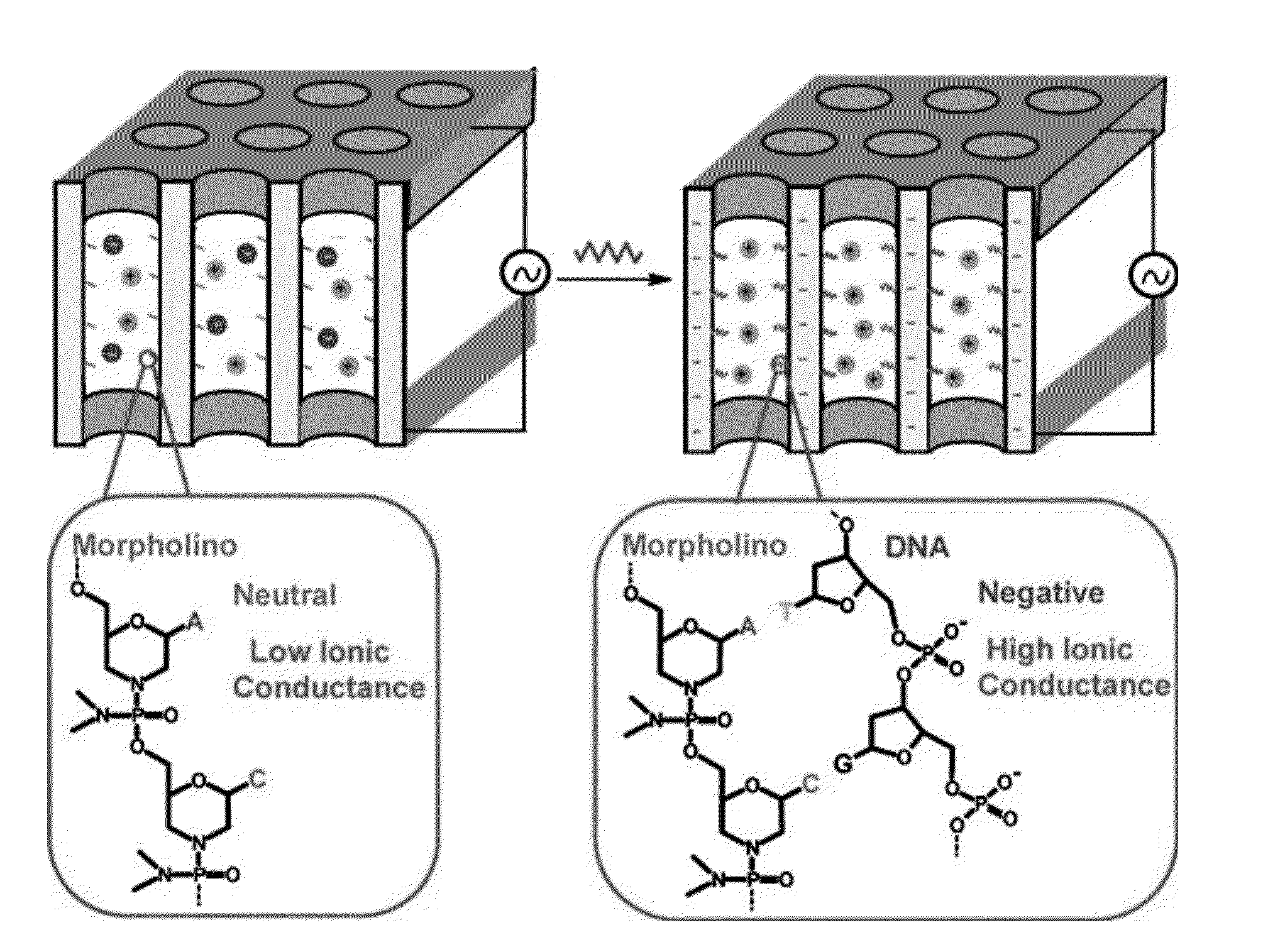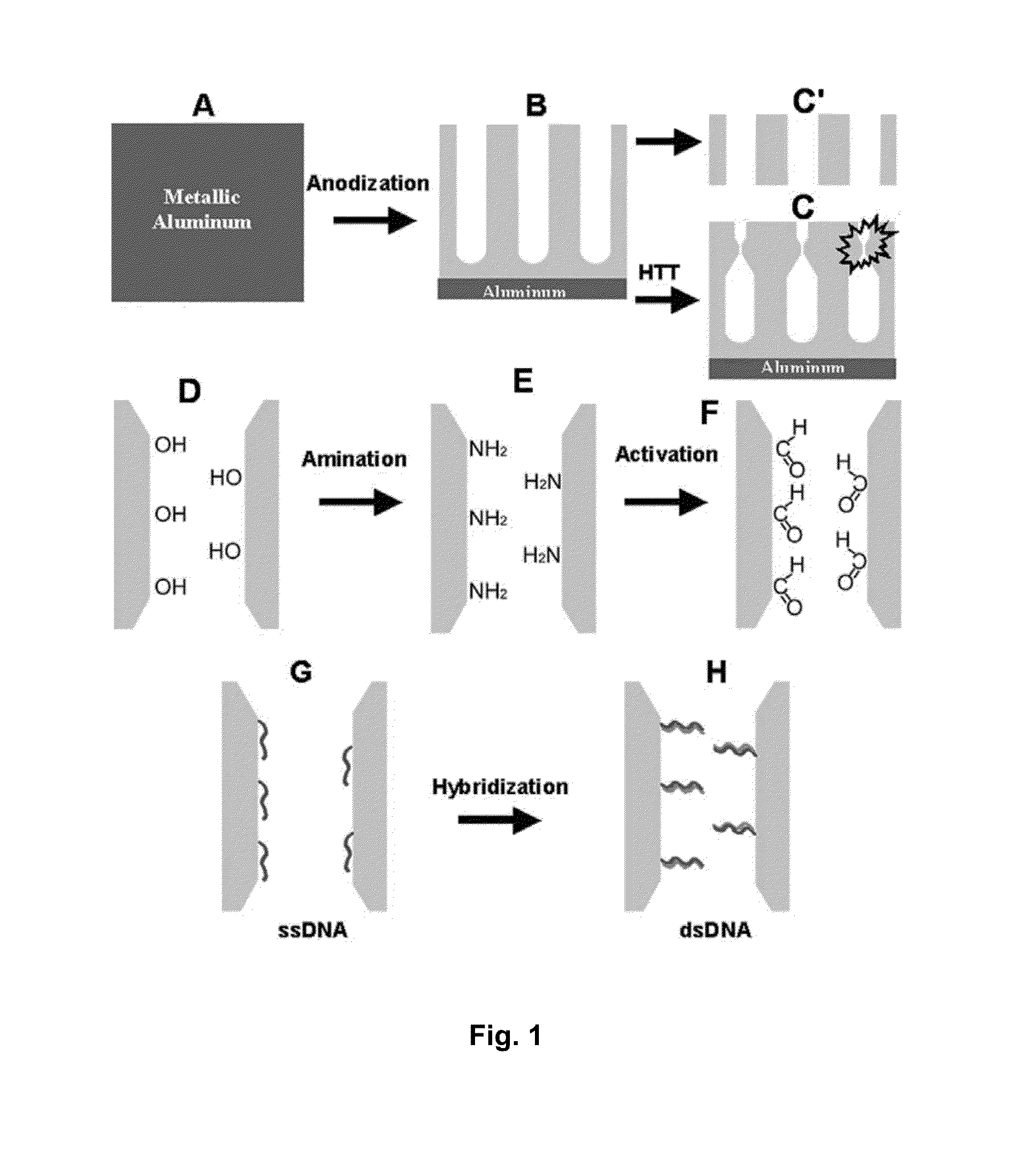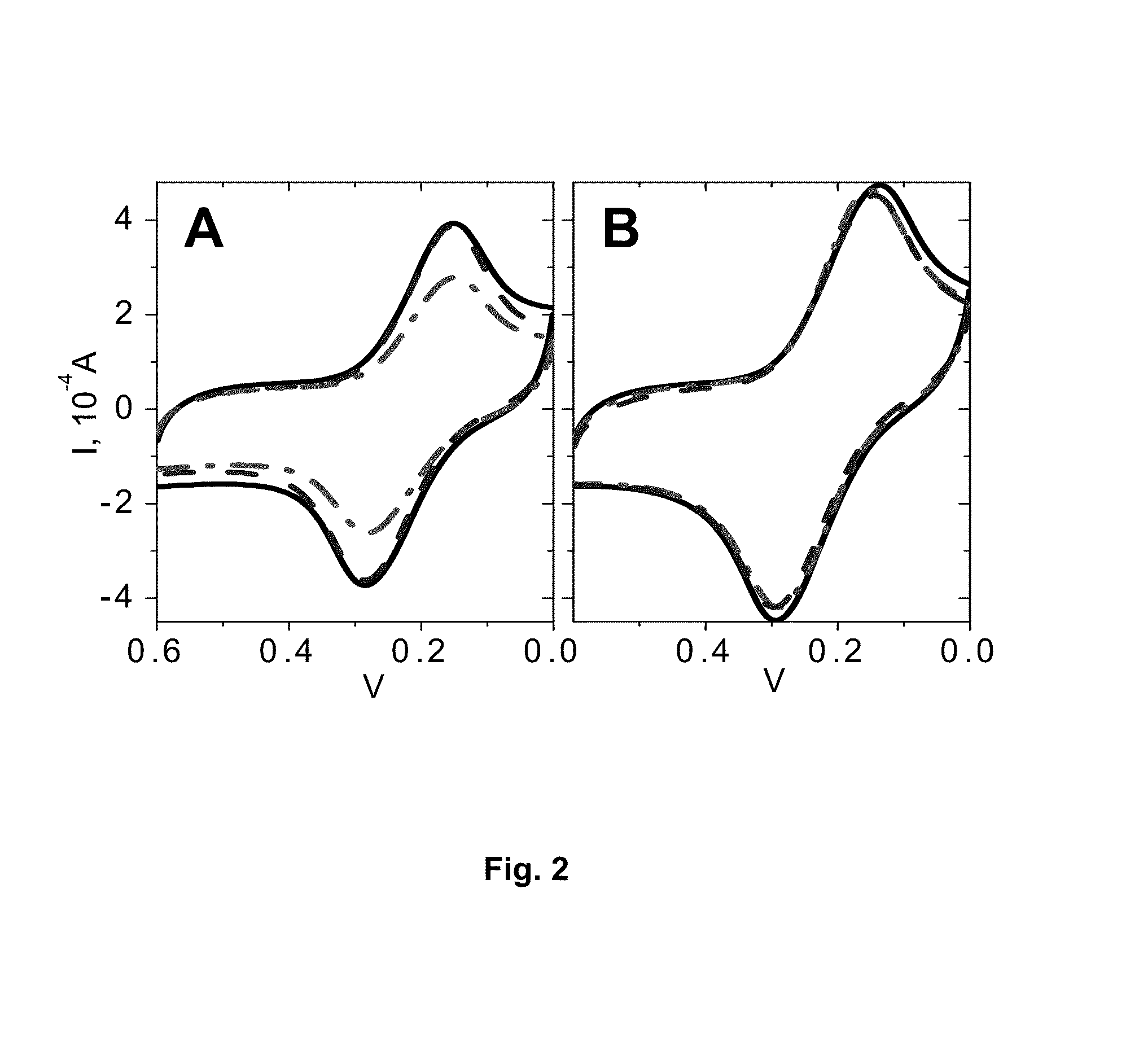Label-free biomolecule sensor based on surface charge modulated ionic conductance
- Summary
- Abstract
- Description
- Claims
- Application Information
AI Technical Summary
Benefits of technology
Problems solved by technology
Method used
Image
Examples
example 1
[0054]1. DNA Sequences:
[0055]The DNA sequences used in this example were as follow:
Surface bound 21-mer: 5′NH2-GCT TAG GAT CAT CGA GGT CCA, ε1(260 nm)=2.25×105 M−1 cm−1 (SEQ ID NO:1);
Complement 21-mer: 5′-TGG ACC TCG ATG ATC CTA AGC, ε3(260 nm)=2.25×105M−1 cm−1 (SEQ ID NO:2); and
Surface bound 21-mer without a complement sequence: 5′NH2-GGC CTT AAT CGG ATA GAG TGA, ε4(260 nm)=2.38×105 M−1 cm−1 (SEQ ID NO:3).
[0056]2. Electrochemical Measurements:
[0057]All electrochemical measurements in this example were performed using 604B electrochemical analyzer (CH Instruments), a flat platinum working electrode, and a reference Ag / AgCl mini-electrode and stainless steel screen counter electrode with modified membrane in close contact with the working electrode. Before each experiment, the working electrode was polished with 0.05μ gamma alumina powder using polishing kit (CH Instruments). Stainless mesh (Fisher) was employed as a counter electrode. Electrochemical measurements were performed usin...
example 2
[0063]1. Preparation of Membrane Substrates.
[0064]Highly ordered nanoporous aluminum oxide membranes were produced via a two-step anodization method as described by Li, A. P., et al., J. Appl. Phys., 84, (1998), 6023; Masuda, H. and Fukuda, K., Science, 268, (1995), 1466, both references incorporated herein by reference. Briefly, aluminum foil (0.1 mm thick, Puratronic 99.997% aluminum) was first electropolished in an ethanol solution of HClO4 then anodized in a 3% oxalic acid solution at a constant potential of 40 V for 3 hours at 7° C. The oxide layer was removed by a CrO3—H3PO4 (1.8% CrO3+6% H3PO4) solution, and the final anodization was performed under the same conditions to reach a desired pore length. Such a procedure yields hexagonally ordered nanopores of 60 nm diameter and 10 μm in length (after 3 hours of anodization). Hydrothermal treatment was carried out in boiling distilled water for different periods of time, causing the pores to shrink. The effect of shrinkage satura...
example 3
[0104]Cystic fibrosis transmembrane conductance regulator (CFTR) is a protein responsible for transport of chloride ions across the membranes of cells in the lungs, liver, pancreas, digestive tract, reproductive tract, and skin. Genetic mutations observed in about 70% of patients with cystic fibrosis (CF) result from deletion of three base pairs in CFTR's nucleotide sequence. This deletion causes loss of the amino acid phenylalanine located at position 508 in the protein; therefore, this mutation is referred to as ΔF508 or F508. CFTR protein with the ΔF508 mutation is incorrectly folded and prevents it from reaching the cell membrane. People who are homozygous for this mutation tend to have the most severe symptoms of cystic fibrosis due to critical loss of chloride ion transport which accounts for more than 90% of the clinical cases. The sodium and chloride ion imbalance creates a thick, sticky mucus layer that cannot be removed by cilia and traps bacteria, resulting in chronic inf...
PUM
| Property | Measurement | Unit |
|---|---|---|
| Diameter | aaaaa | aaaaa |
| Diameter | aaaaa | aaaaa |
| Electrical resistance | aaaaa | aaaaa |
Abstract
Description
Claims
Application Information
 Login to View More
Login to View More - R&D
- Intellectual Property
- Life Sciences
- Materials
- Tech Scout
- Unparalleled Data Quality
- Higher Quality Content
- 60% Fewer Hallucinations
Browse by: Latest US Patents, China's latest patents, Technical Efficacy Thesaurus, Application Domain, Technology Topic, Popular Technical Reports.
© 2025 PatSnap. All rights reserved.Legal|Privacy policy|Modern Slavery Act Transparency Statement|Sitemap|About US| Contact US: help@patsnap.com



